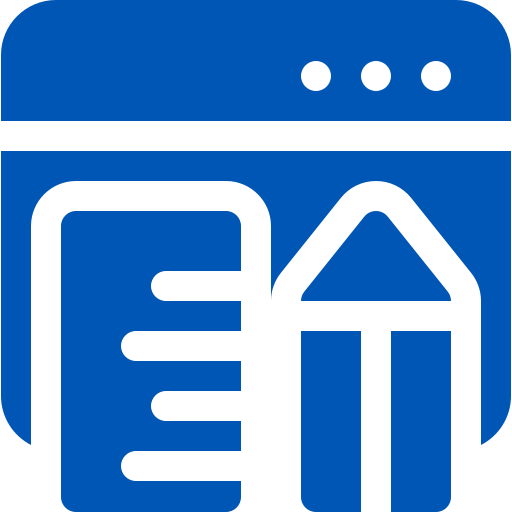SEO
- Home
- SEO




Basic idea of SEO
SEO stands for “Search Engine Optimization,” which means to make a web page appear at the top of search results.
Specifically, this means optimizing the content of your website so that it is easily understood by search engines such as Google, and so that the information you want to convey is properly delivered to the user.
Considering the fact that “searching” has become a part of our daily lives, it is easy to understand how important it is for search engines to properly recognize the information on the web pages we publish.
Objectives of SEO
When your website is ranked high in the search engines, i.e. when SEO is effective, it increases traffic to that, increases interaction on related SNSs, and in turn, increases the popularity of the products displayed, creating a marketing effect similar to that of advertising.
Furthermore, the strength of SEO lies in the fact that, unlike advertising, the costs are limited and the effects are continuous.
Types of SEO Strategies


Internal measures
Internal links
Site Acceleration
SSL enabled


Content Creation
Keyword Selection
Competitive Analysis
High quality content


External measures
External Link Acquisition
Citation
Setting up SNS
3 purposes of implementing internal measures
- Communicate content correctly
to search engines - Encourage
search engine traffic - Ensure
usability
Search engine robots do not understand the meaning of text or the content of images at the same level as humans do. Therefore, you need to set up your site in such a way that search engines can correctly understand the content.
For this reason, setting the title tag and text for each page is a must.
Even if you create good content, it is useless if search engines do not see it.
Crawlability refers to the ease with which crawlers (robots that patrol your site to collect the elements that search engines use to determine search rankings) can patrol and understand your content.
Google allows you to request a crawl, and this is the most reliable way to improve crawlability.
It is important to create content with usability in mind so that it is easy to view for users visiting your site. In addition to organizing traffic so that users can quickly get to the information they need on the site, it is also important to have appropriate font size, fast page display speed, and 404 error page settings.
Our 10 Basic Techniques in SEO
Keyword research and selection
Users enter what they want to know in Google's search window and look for the answer in the search results. What keywords will the user enter? What search results will be displayed as answers to those keywords? Creating content that appears in the search results and that users are happy to click on is an unavoidable path to SEO success. Keyword research begins with gathering information on "keywords". Keyword research takes time and effort, but the more you do, the more you will be able to find keywords that will help you win. Based on the information you gather, you can create content and choose keywords to target.
Use description to get more clicks
The black text that appears in the search results is the description of each site. The description does not directly affect the ranking, but there is a difference in the click rate between those without the description and those with. Even if your site is listed in the search results, if people don't click on it, you won't be able to attract them to your site. Include text in the description that will make people want to click on it, including the search terms. The number of characters should be no more than 120-140 and the text should be created with the goal of increasing the click through rate.
Use the correct title tag
A title tag is an HTML tag used to specify the title of a site or page. When describing a title tag, it should be written in the head tag with
Set up robots.txt
The role of robots.txt is "to specify pages that you do not want to be crawled, and to restrict crawler access. By making good use of this, you can expect to increase the SEO effectiveness of robots.txt. Since being crawled is generally considered to be a good thing, some people may think, "Shouldn't all the contents of a web page be crawled? However, crawling system-generated content such as membership content, shopping carts, duplicate pages, and other automatically generated content can have a negative impact on your overall site SEO. By implementing robots.txt, you can optimize the crawling process by prioritizing important content on your site and limiting useless pages.
Increase page speed
In January 2018, it was pre-announced that page speed would be used as a ranking factor for mobile search, which was introduced in July 2018 as the speed update "Speed Update." Only some sites will be affected, and only really slow pages will be negatively affected, while general page speed will not be negatively affected. However, it is generally believed that for every second a page slows down, conversion rates and customer satisfaction drop significantly, and it is even said that over 40% of users will leave a page that takes more than 3 seconds to display. It is an important measure that will surely bring benefits in various aspects, not just "improving search rankings.
Create content that captures search intent
It is very important to predict what users want to know from search keywords. This is because content that does not contain information that users want to know will not be appreciated by either Google or users. There are various ways to determine search intent, such as checking the actual search results to see what kind of content is available, conducting user interviews, searching for keywords on social networking sites to see what topics are being discussed, and checking Yahoo Answers. This can take a lot of time and effort.
Scrutinize duplicate content
Google strives to index and display pages that have unique information. In order to show search engines which URLs are legitimate, it is essential to scrutinize them for similar or duplicate content.
It is also an important process to avoid the risk of link reputation dispersion and penalties.
Optimize your internal link structure
Optimizing internal links can have a positive impact on search result rankings. Internal links are links that go back and forth within a site.
Especially, making sure to include important keywords in the anchor text and collecting internal links to important pages is one of the most important measures.
Support for image search
Recently, search engines have been focusing on image search as well. Even if you place an image on your site, if the search engine does not recognize what the image is, it will not be able to properly display the image in the search results. When placing images, pay attention to the following points. Always include alternative text (alt attribute), always check the image size to determine how it will look from a smartphone, prepare an image site map, and choose a common image file format such as PG.
Response to smartphone users
Google has announced that it will give preferential treatment to sites that are compatible with smartphones. There are two main points to SEO for smartphones. Being a mobile-friendly site, and correctly telling the search engines that your site is mobile-friendly. Mobile-friendly means that the content can be comfortably viewed and operated on smartphones and other mobile devices. The font size should be large enough to be easily readable on a smartphone, and there should be no content that is not viewable on a smartphone. Google considers a site to be mobile-friendly if it can be viewed without any problems by users who come to the site on mobile devices.





